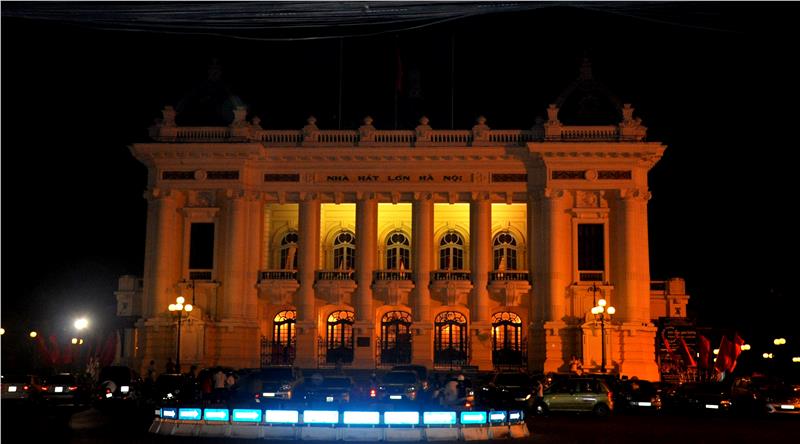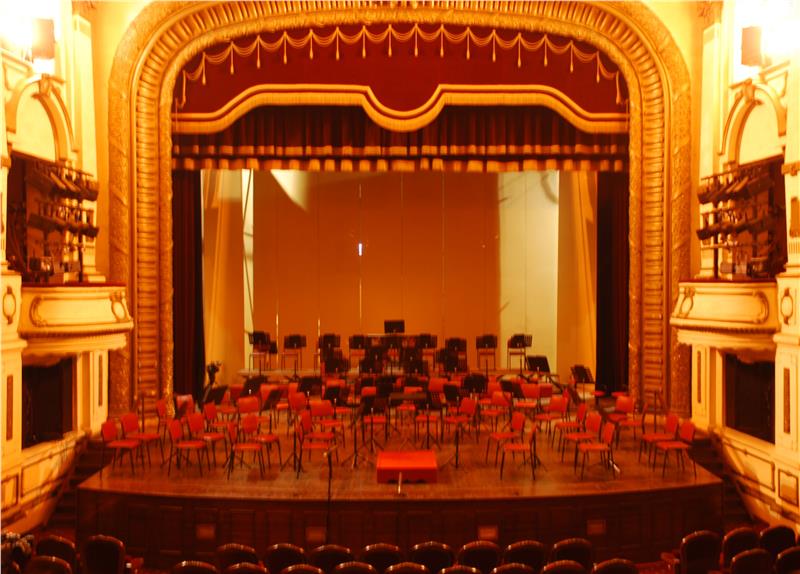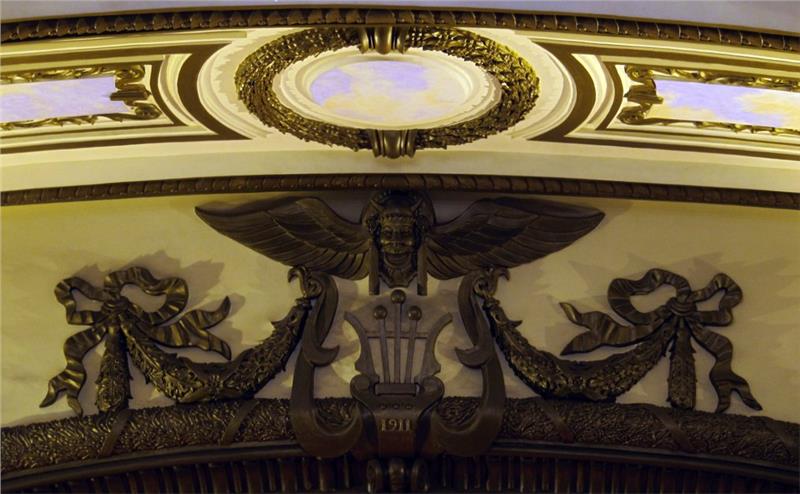Hanoi Opera House, the architectural works serving artistic performances is situated at August Revolution Square, Trang Tien Street. The building began construction in 1901 and completed in 1911, according to the architectural style of Opéra Garnier Opera House in Paris by the French. This is the works of two architects, namely Broyer and Harlay inspired the color and architectural lines of the opera housse in the south of France. The organization of stage, performance space, stairs, entrance... is similar to European theaters in the early 20th century. Though mingled variety of architectural styles, the building still strongly imbues French neoclassical architecture. Hanoi Opera House today becomes a familiar and characteristic image of Hanoi, and is a must-see attractions in Hanoi having a strong appealing for tourists.

Since its completion, Hanoi Opera House has kept the role as one of the important cultural centers of the capital, where organizes the cultural activities and art performances. The Opera House is the birthplace and honor of Vietnam drama and theatrical performances along with art forms of symphony, choral, opera, ballet.. In addition, it is a witness imbued historical markers stretching across Vietnam history. Today, the Opera House is one of the most important performance venues in Hanoi, which is regarded as a "temple" devoted to classical art. Like numerous architectural works and other intangible cultural forms, Hanoi Opera House has become a evidence for the historical period of the city when the mutual interference took place among cultures.

As one of the most impressive Hanoi attractions, the building retains a length of 87 meters, 30 meters average wide, the highest peak of 34 meters above the roadbed, and the building area of about 2,600 square meters. Accordingly, Hanoi Opera House premise is divided into three evident parts. The first space right in the entrance is main lobby with a stone T-shaped staircase leading to the second floor. This is the the first stop welcoming guests to the theater. The floor tiles using fossil rocks associated with the decoration in the spirit of classic create feeling of luxury. The system of small gold-plated chandelier is designed hanging on the wall; meanwhile the overhead chandelier was coated with gold using modern technology.

On the second floor, the mirror room is home to important ceremonies, the signing of Government documents, and welcomes the dignitaries. This room is also used for the auditorium art programs, press conferences or small-scale conferences. The next space is audience room sized 24 x 24 meters with a large stage, 3-storey of 598 seats. The room is decorated with Corinthian orders which supports an arch full color by frescoes alternating patterns of relief, along with a large crystal-gilded chandelier. The floor is tiled and carpeted; the chairs designed in the French classical style of the 19th century. Interior space of theater is generally the harmonious combination of light, color and sound. Finally, behind the stage are 18 dressing rooms for actors, 2 practicing rooms, along with the office, library, and meeting rooms...

In particular, it can be easily to find at the surface of whole building diverse architectural styles. The facade of Hanoi Opera House is extremely prominent thanks to rows of pillars in Roman Ionic order with the the stone-tiled curved roofs on top. It looks like that Renaissance architectural principles are concentratedly emphasized in the surface. Yet the curves of the balconies combined with the curved form on the entrance highlight the Baroque typical elements. In the middle and both sides, the gaudy decorations, the curved support bars, the rectangular or domed windows, all is rich in sculpture and bears a prominent Baroque characteristics. All of the harmony leads to the impression on an architectural works with values not only in term of architecture but also decorative arts. Thanks to the unique architecture, Hanoi travel gradually leaves deep impression in tourists’ mind one taking part in Hanoi Vietnam.

Hanoi Opera House is oner architecture thanks to its outstanding values on history, culture, architecture and art. It plays a significant role in creating the necessary precondition for the expansion of cultural exchanges, particularly in the revive of the national culture. It deserves to be one of the bright spots and the most appealing in Hanoi tourism.
